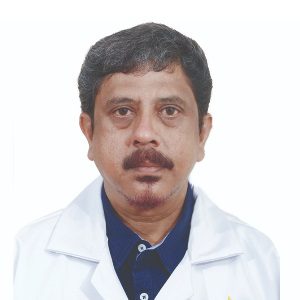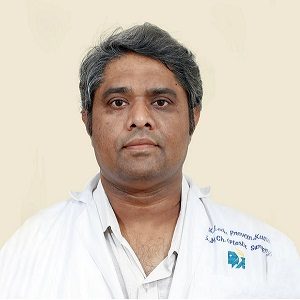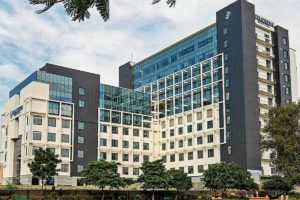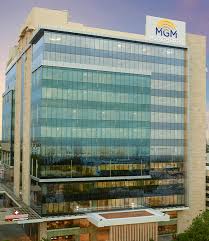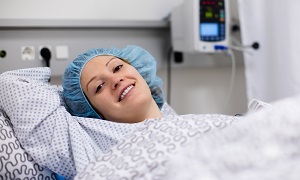Best Doctors in India for Dermabrasion
- Plastic Surgeon and Cosmetic Surgeon, Chennai, India
- Over 14 years’ experience
Profile Highlights:
- Dr. Kannan Prema is a bright young cosmetic surgeon in Chennai, working on aesthetics.
- With over 14 years of experience as a board-certified cosmetic surgeon, Dr. Kannan Prema is the ideal choice.
- She provides surgical treatments like breast reduction, Rhinoplasty, removal of skin tags, buttock liposuction, etc.
- Plastic Surgeon and Cosmetic Surgeon, Chennai, India
- Over 16 years’ experience
Profile Highlights:
- Dr. Kumaresan M N is one of the finest Cosmetic Surgeons in Chennai with nearly 16 years of experience in the field.
- He ensures the best aesthetics for his patients.
- The Tamil Nadu Medical Council has had him as a member since 1992.
- Plastic Surgeon and Cosmetic Surgeon, Chennai, India
- Over 22 years’ experience
Profile Highlights:
- Dr. Leela Praveen Kumar is one of the top Plastic Surgeons in Chennai with more than 22 years of dedicated experience.
- The doctor is frequently visited by the patients for Breast implants, Vaser Liposuction, rhinoplasty, facelift, Breast Reduction, Bariatric Surgery, Microsurgery, Body contouring, Hand surgery, and Onco Reconstruction.
- Dr. Leela Praveen Kumar also manages a non-Surgical fat reduction procedure, known as Cryolipolysis.
- Plastic Surgeon and Cosmetic Surgeon, Chennai, India
- Over 40 years’ experience
Profile Highlights:
- Dr. Sundararajan M S is one of the best Plastic Surgeons in India, having practiced for more than 40 years.
- The doctor offers lipo filling, body contouring, non-Surgical facelift, tummy tuck, implants, etc.
- Dr. Sundarajan bagged the Best paper award in 2008 & 2013 and the other Gold Medal for his contribution to the field.
- Plastic Surgeon, Cosmetic Surgeon, Gurugram, India
- Over 25 years’ experience
Profile Highlights:
- Dr. Aditya Aggarwal has been an eminent figure in the Department of Plastic, Aesthetic, and Reconstructive Surgery.
- Throughout his career, he has invested in microsurgical procedures of physical amputation across the globe.
- He has worked in India, Berlin, Taiwan, and Japan, and his bright career echoes from each corner of the world.
Best Hospitals in India for Dermabrasion
Narayana Superspeciality Hospital, Gurugram
- City: Gurugram, India
Hospital Highlights:
- Situated near DLF Cyber City, Gurugram, Narayana Superspecialty Hospital is one of the top medical facilities in the Delhi NCR region, catering to the needs of the people. Known for its commitment to quality medical care and patient service, the hospital is a state-of-the-art facility with planned and well-equipped sections, which includes a spacious OPD area as well as comfortable patient rooms.
- It is the closest super-specialty hospital from Indira Gandhi International Airport towards Gurugram, and also the nearest super specialty hospital from DLF Cyber City. It is also close to major residential areas in Gurugram.
- It is part of the renowned Narayana Health Group. Established in 2000, by Dr. Devi Shetty, a renowned cardiac surgeon, it has grown to be one fo India’s leading healthcare groups.
Sir Ganga Ram Hospital, New Delhi
- City: New Delhi, India
Hospital Highlights:
- Sir Ganga Ram Hospital, New Delhi is known to provide the latest medical procedures with the latest technology in all of its units.
- The hospital has a team of reputed doctors, nurses, and healthcare professionals that ensure that patients receive quality care at affordable costs.
- Staffed with a team of highly qualified doctors, dedicated nurses, and paramedical and non-medical staff, the hospital aims to lead in healthcare delivery, medical education, training, and research.
- As per the vision of the founder, the hospital also provides free treatment to the economically weaker sections of society.
- Sir Ganga Ram Hospital also provides training to young doctors under the Diplomate in National Board(DNB) program. The DNB program at the hospital was started in 1984 and it is known for currently running the maximum number of DNB specialties in the country. It also has the distinction of having the first bone bank in India.
KIMS Hospital, Hyderabad
- City: Hyderabad, India
Hospital Highlights:
- KIMS Hospital (a brand name of Krishna Institute of Medical Sciences) is one of the largest and best multi-speciality hospitals in Hyderabad. The hospital provides various treatments to an enormous number of patients.
- The hospital has a capacity of more than 3000 beds. KIMS Hospitals offers different healthcare services in more than 25 specialities and super specialities.
- The hospital is equipped with modern medical equipment and technology. It has robotic equipment to provide minimal invasive techniques for patients.
- The hospital is aimed at providing world-class healthcare facilities and services at an affordable cost for patients.
- The various specialities and departments of the hospital include neurosciences, gastroenterology & hepatology, robotic science, reproductive sciences, dental science, oncological sciences, organ transplantation, heart and lung transplantation and mother and child care.
Fortis Hospital, Shalimar Bagh
- City: New Delhi, India
Hospital Highlights:
- Fortis Hospital in Shalimar Bagh is a multi-super specialty hospital that strives to provide world-class patient care by leaving no stone unturned.
- Fortis, Shalimar Bagh, with 262 beds and a 7.34-acre footprint, provides the best level of medical care through its team of doctors, nurses, technicians, and management professionals.
Reliance Hospital, Mumbai
- City: Mumbai, India
Hospital Highlights:
- Reliance Hospital is one of the best super-specialty care hospitals in Navi Mumbai.
- The main purpose of this hospital is to become a trustworthy place for the best health and hope for society. The hospital is well connected to the suburbs of Mumbai and Navi Mumbai.
- The hospital has various specialty departments, viz., Accident & Emergency, Anesthesiology, Dental Services, Dermatology, Diabetology, Dietetics Nutrition, Endocrinology, ENT, Gastroenterology, General Surgery, Gynaecology And Obstetrics, Hepato Pancreato Biliary Surgery, Infectious Disease, Internal Medicine, Interventional Radiology, Laboratory Medicine, Minimal Access Laparoscopic Surgery, Nephrology, Neurosciences, Opthalmology, Orthopaedics, Paediatrics, Pain Management Palliative Care, Physical Medicine Rehabilitation, Plastic And Reconstructive Surgery, Psychiatry, Pulmonary Medicine, Radiology, Rheumatology, Transplant, Urology Andrology, Vascular Surgery
Lilavati Hospital & Research Centre, Mumbai
- City: Mumbai, India
Hospital Highlights:
- Lilavati Hospital & Research Centre is India’s premier multi-speciality tertiary care hospital and has been recognised as a global medical excellence centre.
- Lilavati Hospital & Research Centre has built an unrivalled level of trust with its patients over the years, thanks to a solid foundation that comprises cutting-edge facilities, the best medical competence, research, education, and charity endeavours.
- The hospital is quite proud of the fact that it now serves patients from all kinds of backgrounds, not just from the United States but from all around the world.
- The hospital has a total of 323 beds, one of the largest Intensive Care Units (ICUs), 12 Operation Theatres with modern amenities, over 300 consultants, and almost 1,800 personnel.
Venkateshwar Hospital, Dwarka, New Delhi
- City: New Delhi, India
Hospital Highlights:
- State-of-the-art technology and devoted healthcare professionals have been brought together under one roof at Venkateshwar Hospital to provide genuine medical care. The hospital’s professionals work together as a team to deliver the best possible treatment to their patients, using the most sophisticated equipment and information technology.
- Venkateshwar Hospital’s mission is to attain global excellence in healthcare by employing evidence-based, ethical clinical practices and cutting-edge technology by a team of highly skilled experts.
MGM Healthcare, Chennai
- City: Chennai, India
Hospital Highlights:
- Located in Chennai, India, MGM Healthcare is a top multispecialty hospital that provides all medical services under one roof.
- Since its founding in 2019, MGM Healthcare has quickly become a leading national referral centre, creating several innovative flagship initiatives.
- MGM Healthcare combines next-generation medical and digital technologies to provide better patient results.
- With 12 centres of excellence, more than 400 inpatient beds, 100 intensive care unit beds, and 24/7 emergency care, MGM Healthcare leaves no chance in redefining the patient experience in Chennai.
- MGM Healthcare boasts 250+ expert doctors across 30+ departments, including Cardiology, Pulmonology, Neurology, Obstetrics & Gynaecology, and more.
- They house 12 specialized Centres of Excellence, including Neurosciences, Orthopaedics, and Multi-Organ Transplantation.
- Their team of doctors, nurses, and paramedics works together to give every patient individualized treatment.
DERMABRASION
Dermabrasion is a skin-resurfacing technique that uses a rapidly rotating instrument to remove the skin’s outer layer, especially on the face. This can lead to a smoother skin growing back.
This technique helps in decreasing the appearance of fine facial lines as well as improving the look of several skin flaws, which can include acne scars, surgery scars age spots as well as wrinkles. Dermabrasion can be performed with other cosmetic procedures as well.
The procedure is usually performed in a dermatologist’s office. It is an outpatient procedure, which means you are able to go home once the treatment is over. Skin treated with this technique will be sensitive and blotchy for some weeks. In around three months, your skin tone should return to normal.
Purpose
Dermabrasion helps to remove damaged outer layers of the skin. This can expose new layers of skin which appear younger and smoother. This can help in providing you with a more youthful appearance. Dermabrasion can also help treat multiple other conditions such as sun damage, scars from an injury or surgery, fine wrinkles, age spots, etc.
It is notable that dermabrasion is one of the multiple treatments for people having these conditions. Before you opt for this procedure, it is best if you consult with your dermatologist and talk about all the treatment options that are available for your specific condition.
Some skin conditions such as inflammatory acne, radiation burns, etc. might prevent your doctor from performing this procedure. If you’ve taken medications that have a skin-thinning side effect, this can also make you unable to receive dermabrasion. This procedure is also not usually recommended if your skin tone is too dark.
Preparation
Before you undergo the procedure, it is likely that your doctor will:
Review your medical history- You will need to answer any question regarding your current and past medical conditions and any medications you’re taking or have taken recently. You also need to talk to your doctor if you have had any procedures prior to this.
Do a physical exam- Your doctor will next inspect your skin as well as the area that needs to be treated to determine the changes that are needed and see how your physical features might affect the results.
Discuss your expectations- You need to discuss with your doctor properly regarding your motivations, expectations and potential risks. Also, make sure you understand how much healing time your skin will require before it will return to normal.
Before dermabrasion, you also need to remember certain things.
Stop using certain medications- Before your procedure, your doctor might recommend not taking a few medications such as aspirin or blood thinners.
Take antiviral medication- Your doctor might prescribe an antiviral medication before and after treatment as this will help to prevent any kind of viral infection.
Stop smoking- If you smoke, your doctor might ask that you stop smoking for at least a week before and after the procedure. Smoking decreases blood flow in the skin, which slows down the healing process.
Have onabotulinumtoxinA (Botox) injections- You may receive them around three days before the procedure as these help most people achieve better results.
Use a retinoid cream- Your doctor may recommend a retinoid cream such as tretinoin for some weeks before treatment as it can help with healing.
Take an oral antibiotic- If you have acne, your doctor will be recommending an oral antibiotic around the time of the procedure as this can prevent a bacterial infection.
Avoid unprotected sun exposure- Too much exposure to the sun before the procedure can lead to permanent irregular pigmentation in the treated areas.
Arrange for a ride home- If you are going to be sedated or be receiving a general anesthetic during the procedure, you should arrange for a ride to take you home after the procedure.
Usually, the procedure is performed in an office procedure room or an outpatient facility. However, if you require extensive work done, you might require hospital admission.
First, you will need to wash your face before the procedure. Do not apply any kind of makeup. Wear clothes that you won’t need to pull over your head, as you will have a facial dressing after the procedure.
Procedure
The type of anesthesia you will be receiving during dermabrasion will depend on the extent of your treatment. Typically local anesthesia is used. However, certain cases can require sedation for helping you relax or feeling drowsy. Sometimes general anesthesia might also be given during the procedure.
An assistant will be holding your skin taut during your procedure. Your doctor will move a small, motorized instrument called a dermabrader across your skin.
On large patches of skin, the doctor will be using a circular dermabrader, while on smaller places such as the corners of your mouth, he/she will use one having a smaller tip. The large sections of the skin might need multiple sessions of treatment.
After the procedure, your doctor will cover your treated area with a moist dressing. This dressing is usually changed the following day during the appointment.
After the procedure
You will receive instruction to take care of your skin at home to aid your healing process.
Your doctor will let you know when you can begin cleaning the treated area on a regular basis and apply protective ointments. The instructions provided can vary depending on the extent of the procedure.
While you’re healing:
- Treated skin will become red and swollen
- A crust will form over the treated skin as it begins healing
- You are likely to feel some burning, tingling or aching
- The growth of new skin can be itchy
To relieve any pain after the procedure, you need to take prescribed pain medication or an over-the-counter pain reliever. Talk to your doctor to discuss which pain reliever might be best for you.
You can choose to remain at home while you’re healing from dermabrasion, though you will be able to resume office after two weeks. However, you need to remember to keep the treated areas away from chlorinated swimming pool water for a minimum of four weeks. Your doctor might be recommending you to avoid any kind of active sports for at least one and a half months.
Once the new skin completely covers your treated area, you can conceal any redness using cosmetics.
However, if it appears that your treated skin is getting worse and gets increasingly red, raised and itchy after it has started to heal, then you should inform your doctor. This can be a sign of scarring.
Risks and complications
Risks associated with dermabrasion are usually the same as those associated with any other surgical procedure. This includes infection, bleeding and allergic reaction to anesthesia.
There are also few risks that are specific to dermabrasion which include loss of freckles, redness, swelling, enlarged pores (usually temporary), etc.
Although it is rare, some people can also develop excessive scarring or keloids, after this procedure. In such cases, one can choose steroid medications to help in softening the scars.
Remember to follow your doctor’s advice and attend the follow-up appointment. Be gentle to your skin and avoid using any kind of harsh skin care products. Avoid sun exposure to your skin until it’s healed.


